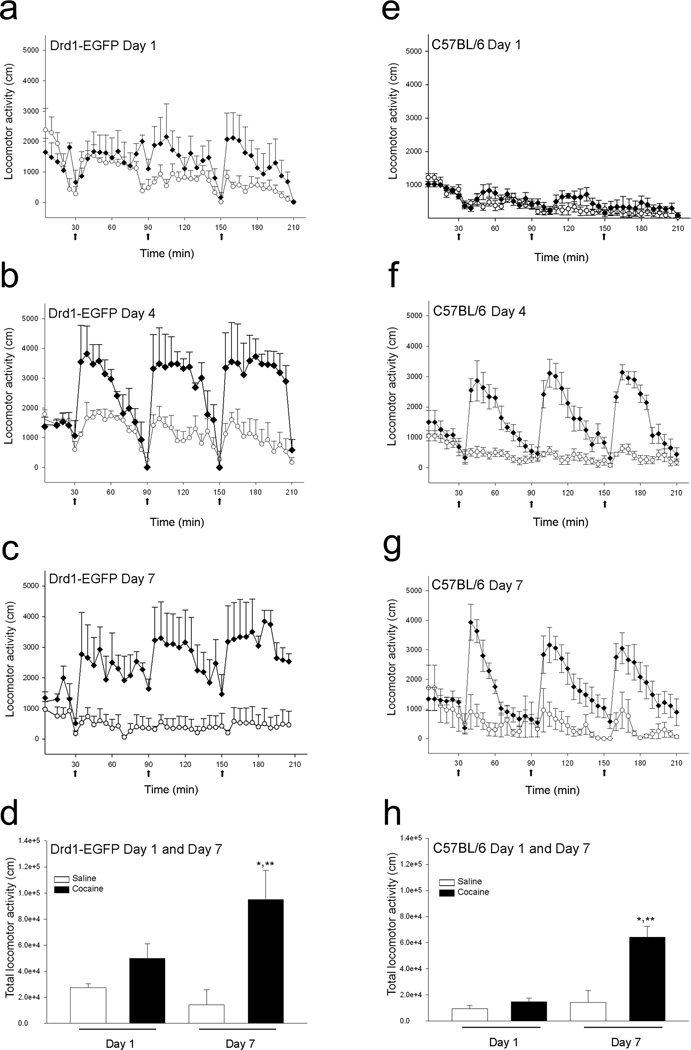Figure 1.
Effect of binge cocaine administration on the horizontal locomotor activity in drd1-EGFP and C57BL/6 mice. Locomotor activity on days 1 (a, e), 4 (b, f), and 7 (c, g) in drd1-EGFP (a–d) and C57BL/6 (e–h) mice. Mice were administered saline (circle) or 15 mg/kg cocaine (diamonds) intraperitoneally at 9:30, 10:30, and 11:30 A.M. daily (black arrows). Photo beam break counts were collected in 5 minute bins for half an hour before and 3 hours after the injections commenced. The total horizontal distance traveled (cm) for three hours in response to saline (white bars) and cocaine (black bars) in drd1-EGFP (d) and C57BL/6 (h) mice were significantly different between the cocaine treated groups on day 1 and day 7 (*, p<0.05, n=4–6, two-way ANOVA) and between the saline and cocaine treated groups on day 7 (**, p<0.05, n=4–6, two-way ANOVA). Error bars represent ± SEM.

